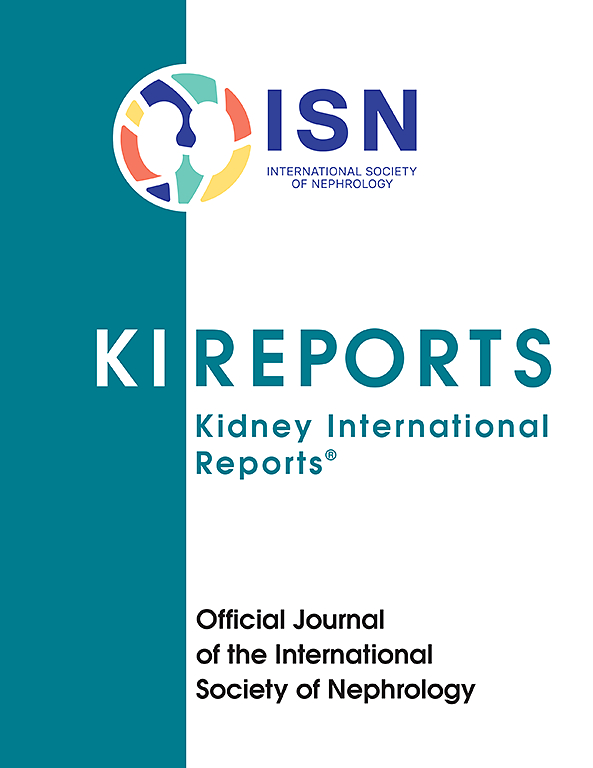慢性肾病患者睡眠卫生策略的系统综述
IF 5.7
2区 医学
Q1 UROLOGY & NEPHROLOGY
引用次数: 0
摘要
慢性肾脏疾病(CKD)患者经常提倡睡眠卫生策略。我们的目的是总结这一人群睡眠卫生策略的现有证据。方法检索截至2024年7月的MEDLINE、EMBASE、CINAHL、PsycINFO 4个电子数据库。任何设计的研究都是合格的,只要他们报告了成人慢性肾病患者的睡眠卫生策略和睡眠结果。我们使用标准化工具提取数据,并将结果综合到睡眠卫生策略的每个组成部分。每个睡眠卫生策略的有效性通过荟萃分析和叙述的方式进行总结。结果共纳入38篇文献。大多数研究(45%)关注睡前活动,运动(标准化平均差[SMD]: - 1.05, 95%可信区间[CI]: - 2.03至- 0.07)和放松技巧(SMD: - 1.54, 95% CI: - 2.34至- 0.73)显示出对睡眠质量的良好影响。然而,这些策略的时间各不相同,限制了将这些策略推广到睡前活动的能力。很少有研究(18%)证明了睡眠卫生教育的积极作用(SMD: - 0.82, 95% CI: - 1.57至- 0.63),特别是在作为认知行为治疗(CBT)的一部分进行时。关于酒精、咖啡因和香烟对睡眠障碍和睡眠障碍的影响,研究人员发现了不同的结果。对CKD患者的卧室环境、睡眠模式和日间午睡进行了有限的研究。结论睡眠卫生教育是改善慢性肾病患者睡眠质量的有效策略。锻炼和放松技巧可以减少睡眠障碍;然而,需要进一步的研究来确定这些活动的最佳时间。本文章由计算机程序翻译,如有差异,请以英文原文为准。
A Systematic Review of Sleep Hygiene Strategy in CKD
Introduction
Sleep hygiene strategies are often encouraged in people with chronic kidney disease (CKD). We aimed to summarize the existing evidence on sleep hygiene strategies in this population.
Methods
We searched 4 electronic databases (MEDLINE, EMBASE, CINAHL, and PsycINFO) up to July 2024. Studies of any design were eligible if they reported sleep hygiene strategies and sleep outcomes for adults with CKD. We extracted data using standardized tools and synthesized the results into each component of the sleep hygiene strategy. The effectiveness of each sleep hygiene strategy was summarized using meta-analysis and in a narrative manner.
Results
Thirty-eight articles were included. Most studies (45%) focused on bedtime activity, with exercise (standardized mean difference [SMD]: −1.05, 95% confidence interval [CI]: −2.03 to −0.07) and relaxation techniques (SMD: −1.54, 95% CI: −2.34 to −0.73) showing promising effects on sleep quality. However, the timing of these strategies varied, limiting the ability to generalize these strategies in relation to bedtime activity. Few studies (18%) demonstrated positive effects of sleep hygiene education (SMD: −0.82, 95% CI: −1.57 to −0.63), particularly when delivered as part of cognitive behavior therapy (CBT). Mixed results were found regarding the impact of alcohol, caffeine, and cigarettes on sleep disturbances and sleep disorders. Limited studies have been conducted on bedroom environment, sleep patterns, and daytime napping in patients with CKD.
Conclusion
This review showed that sleep hygiene education can be a useful strategy for improving sleep in people with CKD. Exercise and relaxation techniques may reduce sleep disturbances; however, further research is necessary to determine the optimal timing for these activities.
求助全文
通过发布文献求助,成功后即可免费获取论文全文。
去求助
来源期刊

Kidney International Reports
Medicine-Nephrology
CiteScore
7.70
自引率
3.30%
发文量
1578
审稿时长
8 weeks
期刊介绍:
Kidney International Reports, an official journal of the International Society of Nephrology, is a peer-reviewed, open access journal devoted to the publication of leading research and developments related to kidney disease. With the primary aim of contributing to improved care of patients with kidney disease, the journal will publish original clinical and select translational articles and educational content related to the pathogenesis, evaluation and management of acute and chronic kidney disease, end stage renal disease (including transplantation), acid-base, fluid and electrolyte disturbances and hypertension. Of particular interest are submissions related to clinical trials, epidemiology, systematic reviews (including meta-analyses) and outcomes research. The journal will also provide a platform for wider dissemination of national and regional guidelines as well as consensus meeting reports.
 求助内容:
求助内容: 应助结果提醒方式:
应助结果提醒方式:


